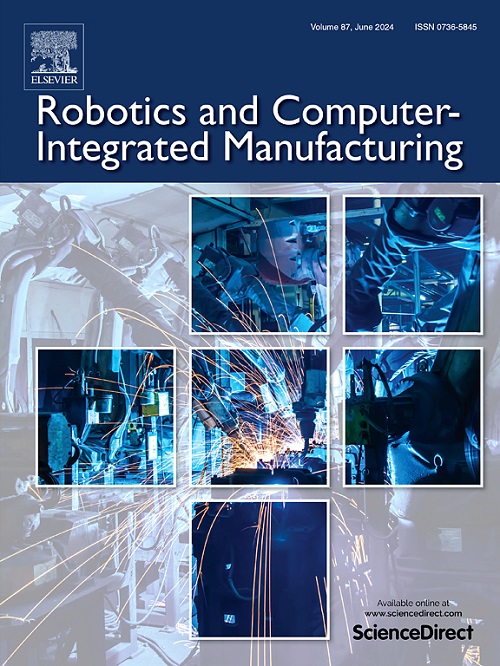资源分配政策下飞机装配线生产调度与工人分配的联合优化
IF 11.4
1区 计算机科学
Q1 COMPUTER SCIENCE, INTERDISCIPLINARY APPLICATIONS
引用次数: 0
摘要
在飞机总装线(AFAL)中,工人资源是至关重要的,因为飞机总装线的特点是大量的手工组装任务。AFAL的特点,包括资源约束、最大完工时间平衡和资源分配的灵活性,比传统的调度问题提出了更大的挑战。研究了AFAL中资源分配策略下的工人分配和多模式任务调度的联合优化问题。考虑了按字典顺序排序的周期时间和工人总投资最小的双目标问题,并建立了一个整数规划模型来求解该问题。我们提出了一种资源再分配嵌入式遗传算法(RReGA)来有效地解决这一优化挑战。首先,采用混合调度规则(hdr)来估计每个工作站的资源最大覆盖映射,从而得到一个高质量的初始资源分配解决方案。利用这些映射,在遗传算法(GA)的进化过程中嵌入一种资源再分配方法,该方法由资源转移策略和资源恢复策略组成,用于搜索工作站调度解决方案。资源转移策略负责跨工作站的动态资源转移,遵循新颖的转移原则,优化周期时间;而资源回收策略的目标是用最少的工人来满足最大完工时间的限制,从而使成本最小化。通过综合对比和消融实验以及不平衡案例研究,验证了该算法的有效性和优越性能。本文章由计算机程序翻译,如有差异,请以英文原文为准。
Joint optimization of production scheduling and worker allocation under a resource dedication policy in aircraft assembly lines
Worker resources are crucial in aircraft final assembly lines (AFAL), which are characterized by extensive manual assembly tasks. The features of AFAL, including resource constraints, makespan balancing, and flexibility in resource allocation, present greater challenges than conventional scheduling problems. This paper addresses the joint optimization problem of worker allocation under a resource dedication policy and scheduling of multi-mode tasks in the AFAL. Bi-objective with lexicographic order of minimizing the cycle time and total worker investment is considered, and an integer programming model is developed to formulate this problem. We propose a resource reallocation embedded genetic algorithm (RReGA) to solve this optimization challenge effectively. Initially, hybrid dispatch rules (HDRs) are employed to estimate the resource-makespan mapping of each workstation, yielding a high-quality initial resource allocation solution. Leveraging these mappings, a resource reallocation method, composed of a resource transfer strategy and a resource recovery strategy, is embedded in the evolutionary process of the genetic algorithm (GA) searching for scheduling solutions at the workstation. The resource transfer strategy is responsible for dynamic resource transfer across workstations, following a novel transfer principle to optimize the cycle time; while the resource recovery strategy aims to meet makespan constraints with the fewest workers to minimize cost. The efficacy and superior performance of the proposed algorithm are validated through comprehensive comparison and ablation experiments, as well as an unbalanced case study.
求助全文
通过发布文献求助,成功后即可免费获取论文全文。
去求助
来源期刊
CiteScore
24.10
自引率
13.50%
发文量
160
审稿时长
50 days
期刊介绍:
The journal, Robotics and Computer-Integrated Manufacturing, focuses on sharing research applications that contribute to the development of new or enhanced robotics, manufacturing technologies, and innovative manufacturing strategies that are relevant to industry. Papers that combine theory and experimental validation are preferred, while review papers on current robotics and manufacturing issues are also considered. However, papers on traditional machining processes, modeling and simulation, supply chain management, and resource optimization are generally not within the scope of the journal, as there are more appropriate journals for these topics. Similarly, papers that are overly theoretical or mathematical will be directed to other suitable journals. The journal welcomes original papers in areas such as industrial robotics, human-robot collaboration in manufacturing, cloud-based manufacturing, cyber-physical production systems, big data analytics in manufacturing, smart mechatronics, machine learning, adaptive and sustainable manufacturing, and other fields involving unique manufacturing technologies.

 求助内容:
求助内容: 应助结果提醒方式:
应助结果提醒方式:


